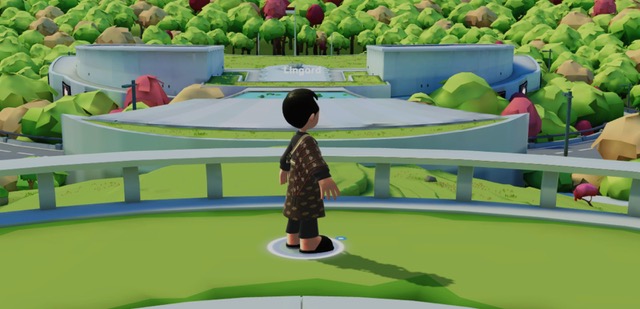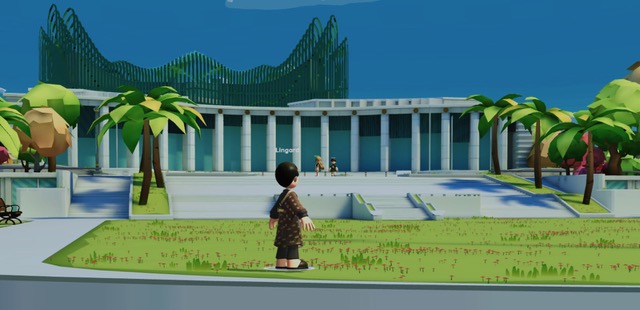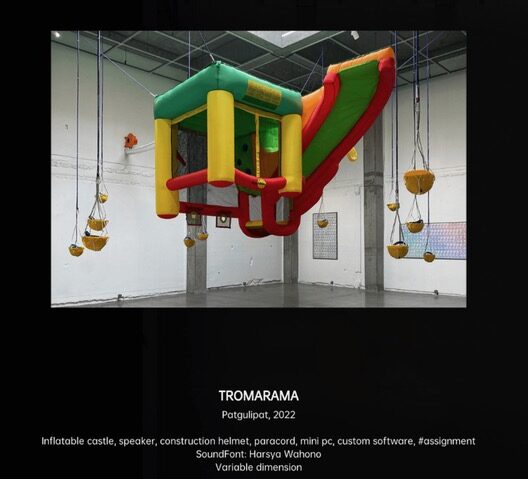For Timor-Leste, the 20th century was a century of repeated mass violence. While the Manufahi Rebellion of 1911–1912 is celebrated by East Timorese as the last great uprising against Portuguese rule, and the terrible loss of life under the Indonesian occupation (1975–1999) is viewed as the tragic price of freedom, the impact of the Japanese occupation (1942–1945)—both demographic and social—has been all but neglected.
Scholars have offered a variety of estimates for the death toll during the Japanese occupation. Writing at the time of the aborted first decolonisation, Peter Hastings reported that 40,000 people died from famine “toward the end of the war”. James Dunn cited the same figure of 40,000, but suggested the real total might be 50% higher. And, perhaps building on Dunn’s observation, Geoffrey Gunn estimated 40,000–70,000 unnatural deaths.
A document I recently found in the National Archive of Timor-Leste provides the occasion to revisit the death toll in Portuguese Timor during the Japanese occupation. The one-page document (see image below), signed by Abilio da Paixão Monteiro, the secretary of the Central Office of the Dili Civil Administration, and dated 18 September 1947, is titled “Deaths due to Natural Causes or Murder during the War”.
That title may be misleading, however, for what the author appears to mean is not deaths from “natural causes” but rather “unnatural deaths” (i.e. those resulting from deprivation and disease), as opposed to those resulting from the direct use of violence (i.e. killings and torture). Below the categories for (un)natural deaths and killings, the table is further divided into columns for adults and children, and each of these is further subdivided by gender in each of the ten districts (called Concelho or Circunscrições). The total number of deaths from both (un?)natural causes and murder during the Japanese occupation is 32,368 individuals.
Unfortunately, the Monteiro document is not accompanied by an explanation of why or how the data were collected. But given the date, it is likely that when instructions were sent to district-level officials to carry out a census in 1947, instructions were also issued to compile data on the loss of life during the Japanese occupation. The living and the dead were two sides of the same coin. But just as there is good reason to suspect that the final tabulation of the 1947 census seriously undercounted the actual population, there is also good reason to suspect that Monteiro’s table grossly undercounted the death toll during the war.
How, then, might we reassess the longstanding estimates of the death toll during the Japanese occupation? And what else might this document contribute to our understanding of the dynamics and impact of the Second World War on the people of Timor-Leste?
Estimating population loss
The basic technique for estimating population loss is well-known: use census figures from before the Second World War to project what the population of the territory would have been when the Japanese invaded in 1942 (or what the population would have been in 1945 if the Japanese had not invaded), and then use post-war census figures to interpolate backward to the estimated population in 1945. The difference between the two figures is the number of “missing” people who need to be accounted for by a combination of a) reduced fertility, b) flight or removal from the territory, and, what is of primary interest, c) killings and unnatural death from malnutrition and disease. The available data from which a model can be constructed include the following figures for the years between 1930 and 1960.
My first estimate (see chart below) is based on population figures that are closest to the years of the Japanese occupation, and hence require the least extrapolation over time. First, the population trend between 1935 and 1940 is projected forward to 1941 (460,000), on the eve of the Japanese invasion, and again to 1945 (459,558), when the war ended. These are effectively the same. Second, a population figure for 1946 reported in a 1965 publication by Portugal’e General Overseas Agency (Agência-Geral do Ultramar) is used. The result is a total “missing population” of 56,326 people. Accepting that some portion of this is the result of lower birth rates rather than actual loss of life, we might settle for a rough estimate of around 50,000 people who died unnatural deaths under the Japanese occupation. This is squarely in the middle of the long-standing estimates of the death toll in Portuguese Timor during the war.
The problem with this estimate is that the population figures immediately prior to the Japanese occupation (1935 and 1940) and immediately after it (1946) are all clearly gross undercounts. Each requires some discussion.
First, it is not plausible that the population of Portuguese Timor declined between 1930 and 1935 and then remained stagnant between 1935 and 1940. Neither famine, dramatic changes in birthrates, nor migration out of Portuguese Timor are known to have occurred. In fact, there are quite plausible explanations for the unexpectedly low population figures reported for 1935 and 1940. In 1934, the colonial government reorganised the administrative districts, reducing their number from 13 to 10, which disrupted normal bureaucratic routines, including tax collection. These disruptions likely extended to the census exercise, thus explaining the decrease in the population tallied in the 1935 census.
Five years later, the 1940 edition of the Yearbook of the Portuguese Colonial Empire (Anuário do Império Colonial Português) provides a population figure of 460,104 for Portuguese Timor, but there is no evidence in the colonial gazette or the archives in Dili, Macau or Lisbon that a census was taken that year. One cannot help but suspect that this lone figure for 1940 was a projection, perhaps made by an official in the metropole, based on the figure from the 1935 census rather than the result of a new census count. It appears that a census was conducted in 1941, but the only returns found in the Timor-Leste National Archive are from Fronteira District. Although only a partial picture, the population of Fronteira (formally Bobonaro and Covalima Districts) increased at a healthy 1.25% between 1930 and 1941. This clearly undermines the notion that the population had stagnated for the entire decade.
Taking a comparative perspective, we might also assess the possibility that Portuguese Timor experienced an entire decade of population stagnation by considering rates of population change elsewhere in Southeast Asia. The demographer Charles Hirschman has compiled figures for a number of territories in the region, which show the following for the 1930s: the population of Burma grew by 1.1%; that of Peninsular Malaya grew by 1.6%; and that in Thailand grew by 2.6% between 1929 and 1936.
In light of this, negative population growth, or even population stagnation, in Portuguese Timor over an entire decade is highly unlikely. On the other side of equation, there is no apparent basis for the population figure of 403,232 for 1946 reported in the 1965 Portguese government volume referenced above, and the final results of the 1947, which found a population of 417,412, is most likely an undercount caused by bureaucratic disruption (including personnel changes, loss of records, etc.). For these reasons, the above estimate, which shows a total loss of life of approximately 50,000, should be rejected.
If the figures on which the first estimate are based are clearly underestimates, what other data might be used?
The answer is to interpolate forward and backward from census data that are deemed to be more reliable, even if those figures are “further” away from the period of the Japanese occupation. Specifically, considering that the rate of population growth between 1916–1927 was 1.6% per cent, and that between 1927 and 1930 it was 1.2% per cent, we might adopt a conservative estimate for the decade of the 1930s of 1%. This figure is close to that reported for Burma, but well below the known rates in other parts of Southeast Asia. Similarly, given that population growth between 1950 and 1960 was 1.6%, we might adopt an equally conservative interpolation of 1% for the period 1945–1950. These assumptions, which are intentionally on the conservative side so as to avoid inflating the total loss of life during the war, are graphed below.
This suggests that by the end of the Japanese occupation there were 103,000 fewer people in Portuguese Timor than before the war. By assessing the difference between the projected population in 1941 and the interpolated population in 1945 we avoid the issue of changes in the fertility rate versus infant mortality, which simply cannot be resolved given the existing data. Second, we need to ask if at least some of the “missing” people were transported from Portuguese Timor to other places in neighboring Netherlands East Indies or beyond.
There are anecdotal accounts that the Japanese army transported small numbers of people to islands in the occupied Netherlands East Indies. During fieldwork in Maubara subdistrict, to the west of Dili, I have heard stories that a few people were taken to the neighboring island of Alor, and it was unclear if they ever returned to Portuguese Timor. Similarly, it is possible that some inhabitants, especially from the central and eastern-most districts, may have been taken as labourers to the islands of Wetar, Kisar and points even further east to provide labor for the construction of bunkers and other fortifications. But without evidence that significant numbers of people were removed from the colony and were unable to return when the war ended, it seems safest to leave removal out of calculations.
Setting aside these two unknown variables, we arrive at an estimated death toll during the Japanese occupation of approximately 100,000 people—which would mean that a staggering 19% of the population of Portuguese Timor in 1942 perished during the Japanese occupation.
The implications for history
Beyond the study of Timor-Leste, an estimated death toll on this scale is of interest for comparative purposes. If correct, the death toll in Portuguese Timor during the Second World War was the highest in the world, exceeding the standard estimates for Poland (16.9–17.2% of the population), Lithuania (14.3%), and the Soviet Union (13.7%). In addition to these cases from Eastern Europe, one should also note the tiny island of Nauru, in the Pacific, where an estimated 500 out of a total pre-war population of 3,400 people, or 14.7% of the population, died unnatural deaths.
The astronomical losses of life on Nauru and Portuguese Timor cannot be attributed simply to the Japanese Army’s reputation for brutality: what Nauru and Portuguese Timor have in common is that both were key forward positions in the Japanese war effort—Nauru against General McArthur’s advance through the Pacific toward the Solomon Islands, and Timor against Allied advances from Darwin into Indonesia and northward to the Philippines – and hence were sites in which Japanese commanders were especially suspicious of indigenous loyalties and required all available laboyr to build defences.
Indonesia and North Korea: warm memories of the Cold War
Friendly ties to Pyongyang have been an emblem of non-alignment for generations of Indonesian foreign policy makers.
That raises a second question: why was there no Portuguese reporting about the scale of the tragedy? In more remote areas, particularly the easternmost districts, where no Portuguese officials remained and where some Timorese elites collaborated with the Japanese, there may not have been witnesses who were willing to speak about what had happened. And when the colonial administration was reestablished after the war, Portuguese officials may have been too busy with the basic logistics of repairing damaged infrastructure and securing supplies, as well as the identification and arrest of those Timorese who had collaborated with the Japanese, to think about documenting the enormous loss of life that had occurred in their absence. More careful perusal of Portuguese archives may turn up additional clues concerning both the total numbers who died and the circumstances in which they perished.
Beyond demographics, the massive loss of population and associated suffering under the Japanese occupation raises important questions about social and cultural change. This was, of course, not a one-off event. In 1911–12, in 1942–1945, and again in 1975–1999, the people of Timor-Leste experienced major losses of population. Since the restoration of independence in 2002, scholars have explored the survival and revival of “culture” after the brutal 24-year occupation. But if this was part of a larger series of disruptions, perhaps, as the anthropologist Renato Rosaldo showed in his study of Ilongot society in Luzon, the real question needs to be how episodes of mass violence have resulted in changes in the “uses and customs” of the people—and indeed in their very understanding of what “culture” is.
The post Population loss in Portuguese Timor during WW2 revisited appeared first on New Mandala.
This post was originally published on New Mandala.








